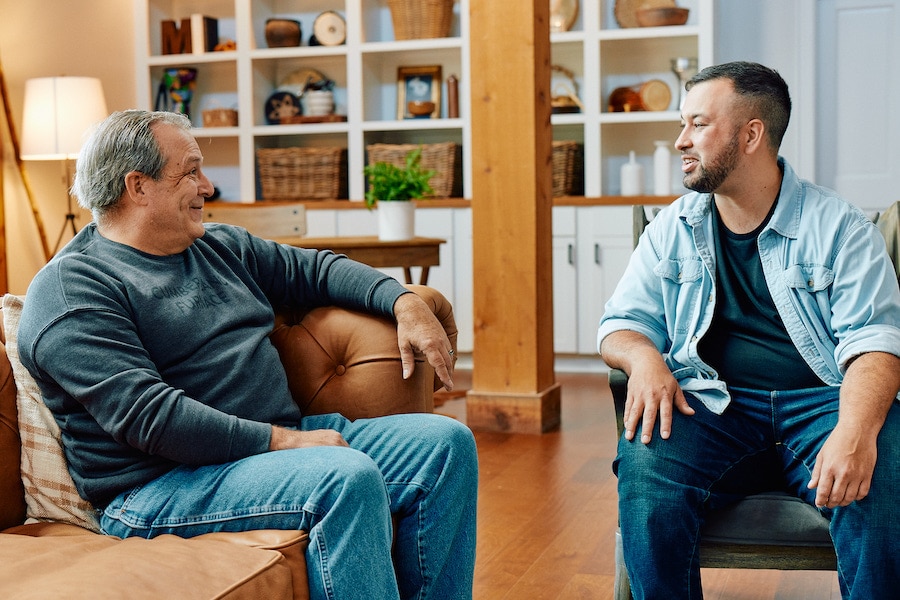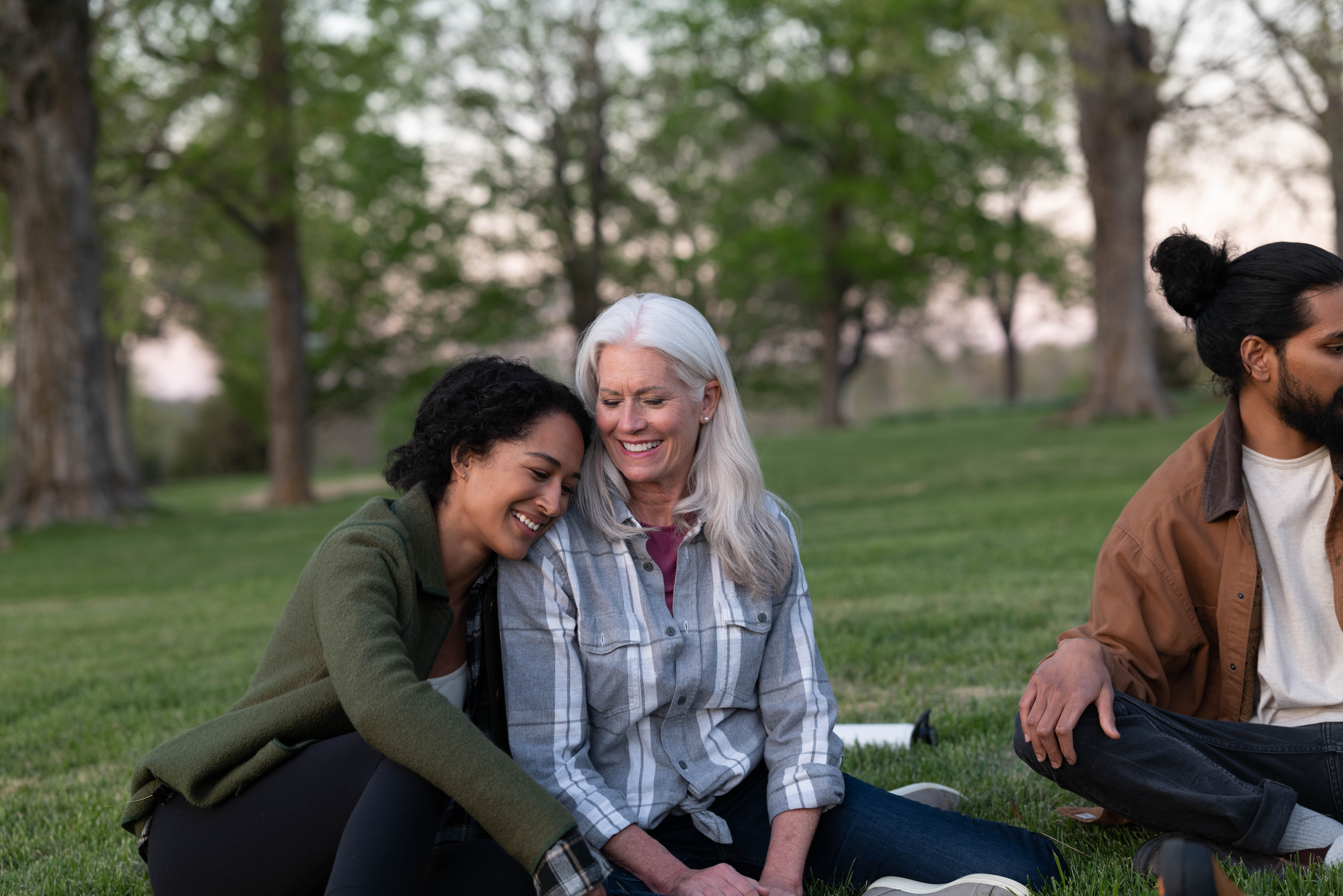How to Talk About Suicide
Originally posted in collaboration with Style Blueprint.
September is National Suicide Prevention Month, and it’s a sobering reminder that we still need to create infinitely more awareness and conversation around the subject. According to the American Foundation for Suicide Prevention, suicide is the 12th leading cause of death in the United States — a staggering statistic that calls us to action.
The sad reality is that most people are touched by suicide at some point in their lives. And yet, suicide isn’t an easy topic of discussion. It’s delicate, raw, and brutal. It opens wounds, exposes vulnerabilities, and lays our truths bare. But open discussion is necessary and potentially lifesaving. So how can we create more dialogue to give ourselves and our loved ones a safe space to open up? We consulted the mental health experts at Onsite for insight into suicide — from the current statistics to guidance on approaching a friend or family member who needs help.
Breaking the Taboo
There’s nothing easy about bringing up the topic of suicide. For many of us, it’s uncharted territory. First, it’s okay not to have all of the answers or immediately know the “right” things to say. “I think we often carry the misconception that when someone brings this information to us, we need to have it all together and know exactly what to do with it and what to say,” says Mickenzie Vought, Editorial and Community Director for Onsite. “We put a lot of pressure on ourselves. It might actually benefit the person sharing to simply say, ‘Thank you for trusting me. That’s a lot. It matters. And I’m not exactly sure what to say, but I’m here.’ Our presence and honesty are important.”
One common and longstanding myth is that bringing up a conversation about suicide will lead to or encourage someone to follow through with it. In fact, the opposite is true. Normalizing the conversation can pull someone out of a dark place and offer hope. Addressing the subject and offering your support and compassion can break the stigma and help someone see things from a different angle. It can open the door to finding healthy coping skills. “The first step toward making something less taboo is simply creating the space to talk about it with the people around us,” says Onsite Clinical Supervisor Emilie Kadlec.
Identifying the Struggle
Sometimes it’s challenging to recognize when someone is in crisis, but there’s an easy-to-remember acronym that offers a starting point. “IS PATH WARM” provides a list of red flags to help us identify when we, or a loved one, are struggling with suicidality.
Health, environmental, and historical issues can lend themselves to putting someone at greater risk, and it helps to consider whether or not they are a contributing factor.
HEALTH
Mental health conditions such as depression, substance use problems, bipolar disorder, schizophrenia, personality traits of aggression, mood changes, and poor relationships, conduct disorders, and anxiety disorders are all risk factors. Additionally, severe physical health conditions, including pain and traumatic brain injury, can put someone at greater risk of experiencing suicidal thoughts.
ENVIRONMENTAL
Our world is more challenging to navigate than ever. Access to lethal means, including firearms and drugs, or exposure to another person’s suicide or graphic, sensationalized accounts of suicide can be damaging, as can prolonged stress such as harassment, bullying, relationship problems, or unemployment. Stressful life events, like rejection, divorce, financial crisis, loss, or other life transitions, can prompt suicidal ideation.
HISTORICAL
Previous suicide attempts, a family history of suicide, and childhood abuse, neglect, or trauma have long-term effects, and their impact is widespread. One potential effect is suicidal thoughts.
Creating a Safe Space
Once you’ve identified that you or someone you love are struggling with suicidality, creating a safe space for conversation is crucial — a space with mutual trust and without judgment. “It’s important to create the type of reciprocal relationships with people where we’re talking about hard things, our feelings, and the reality of our internal worlds in all seasons — not just when we’re in crisis,” says Mickenzie. “This creates mutual trust. When there is an established relationship, we’re more willing to open up and be real about what we’re experiencing if we’ve gone to that person in other seasons … Many of us are scared when a loved one expresses suicide ideation. Instead of pretending we’re not, it can be really loving to tell the person we’re scared, but we’re also not going to leave them alone in their feelings.”
Carlos Martinez, one of Onsite’s clinicians, offers four steps to take when responding to someone who’s struggling.
GRATITUDE
“The first step is gratitude,” Carlos tells us. “Say, ‘Thank you for sharing that with me.’ Expressing gratitude is a powerful way of validating someone’s experience and the vulnerability and strength it took for them to share. One of the most healing things we can do for the people in our lives — no matter what they’re facing — is to remind them that what they’re experiencing isn’t too big or too scary for us to hold with them.”
HOLD SPACE
“We get so uncomfortable with other people’s emotional pain that we immediately want to fix it for them,” explains Carlos. “But, instead, we can simply say, ‘That’s a lot. I want to let you know that I am here with you and for you. You’re not alone in this.’” He adds that holding space for the people in our life involves showing up in that discomfort. Acknowledging and validating what they’re experiencing can go a long way. “So many of us grew up in systems that dismissed our pain,” he says. “It is a rare gift to ask someone to share what they’re feeling and meet them with grace, empathy, and without judgment.”
PROVIDE RESOURCES
Once you’ve successfully created a safe space to open the lines of communication and acknowledge your loved ones’ struggles, you’re in a position to offer help. Carlos suggests approaching with, “How can I help you? If you want to walk out of this, we can find resources together.” Of course, offering help and resources to those we love is not one size fits all. For some, it may mean directing them to the National Suicide Lifeline, Warmline, or a therapist who can offer professional help. For others, it may involve hearing stories from peers who’ve walked in their shoes and found their way to the other side. “It can also look as simple as offering your presence,” says Carlos. “Ask to hang out with them or share a meal with them.” Another impactful resource to consider is To Write Love On Her Arms, a site dedicated to creating honest and hopeful conversations around suicide prevention.
ASK AGAIN
Carlos’ final suggestion is to ensure you don’t take someone’s silence as an indication that they’ve “moved on.” “I think the easy opt-out would be to think they’re fine,” he says, “to think, They haven’t talked about it in a while, so I’m sure they’re better. Make sure you check in on all your friends — not just the ones you think are okay. Check in on the ones who seem like they have it together or those you haven’t checked in on for a while because you never know. You absolutely never know.”
Keep Checking In
Last but certainly not least, the Onsite team reiterates the importance of continuing to check in on your loved ones — even if they appear fine. When you don’t know how to show up, they encourage you to show up anyway. “Sometimes the best gift we can offer is our presence and willingness to lean into hearing about someone’s experience,” Carlos says. “We invite you to view this as an ongoing conversation with the people you love. Just because they tell you they’re not feeling suicidal right now doesn’t mean they might not feel that way again in the future. We believe it’s vital to check in on all the people we love. We all want connection. We all want to be seen. We all want safe spaces to talk about the things we’re facing.”
If you or someone you love is struggling with suicidal thoughts, we encourage you to reach out to a safe person today — whether that’s a friend, family member, or trusted professional. If you have intent or plans to harm, please reach out to the Suicide Crisis Lifeline (988) or text the hotline at TWLOHA at 741741. Your life matters.
For more honest conversations about Suicide, check out this recent podcast episode featuring Onsite Clinical Supervisor, Emilie Kadlec.



















